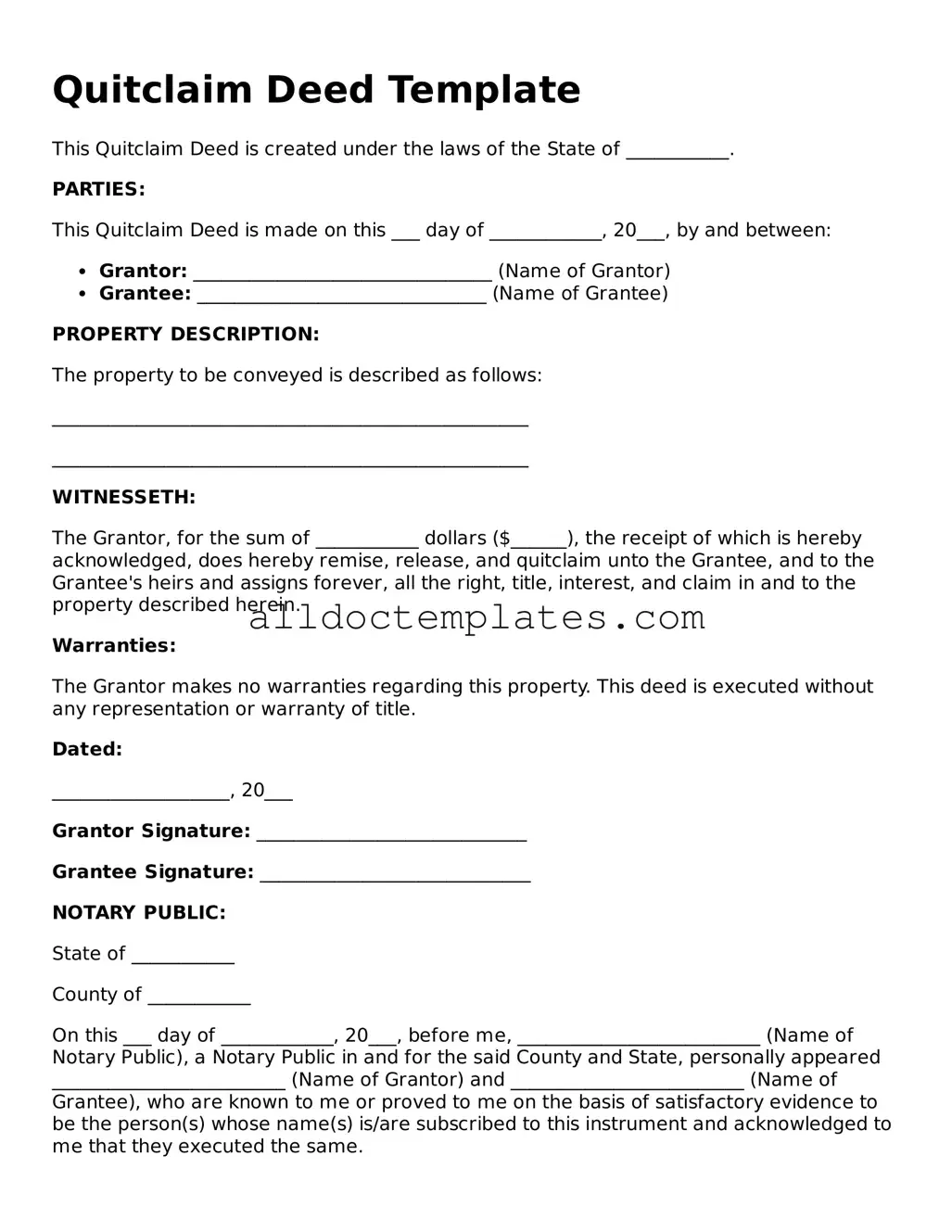Quitclaim Deed Template
This Quitclaim Deed is created under the laws of the State of ___________.
PARTIES:
This Quitclaim Deed is made on this ___ day of ____________, 20___, by and between:
- Grantor: ________________________________ (Name of Grantor)
- Grantee: _______________________________ (Name of Grantee)
PROPERTY DESCRIPTION:
The property to be conveyed is described as follows:
___________________________________________________
___________________________________________________
WITNESSETH:
The Grantor, for the sum of ___________ dollars ($______), the receipt of which is hereby acknowledged, does hereby remise, release, and quitclaim unto the Grantee, and to the Grantee's heirs and assigns forever, all the right, title, interest, and claim in and to the property described herein.
Warranties:
The Grantor makes no warranties regarding this property. This deed is executed without any representation or warranty of title.
Dated:
___________________, 20___
Grantor Signature: _____________________________
Grantee Signature: _____________________________
NOTARY PUBLIC:
State of ___________
County of ___________
On this ___ day of ____________, 20___, before me, __________________________ (Name of Notary Public), a Notary Public in and for the said County and State, personally appeared _________________________ (Name of Grantor) and _________________________ (Name of Grantee), who are known to me or proved to me on the basis of satisfactory evidence to be the person(s) whose name(s) is/are subscribed to this instrument and acknowledged to me that they executed the same.
____________________________________
Notary Public
My Commission Expires: ___________
